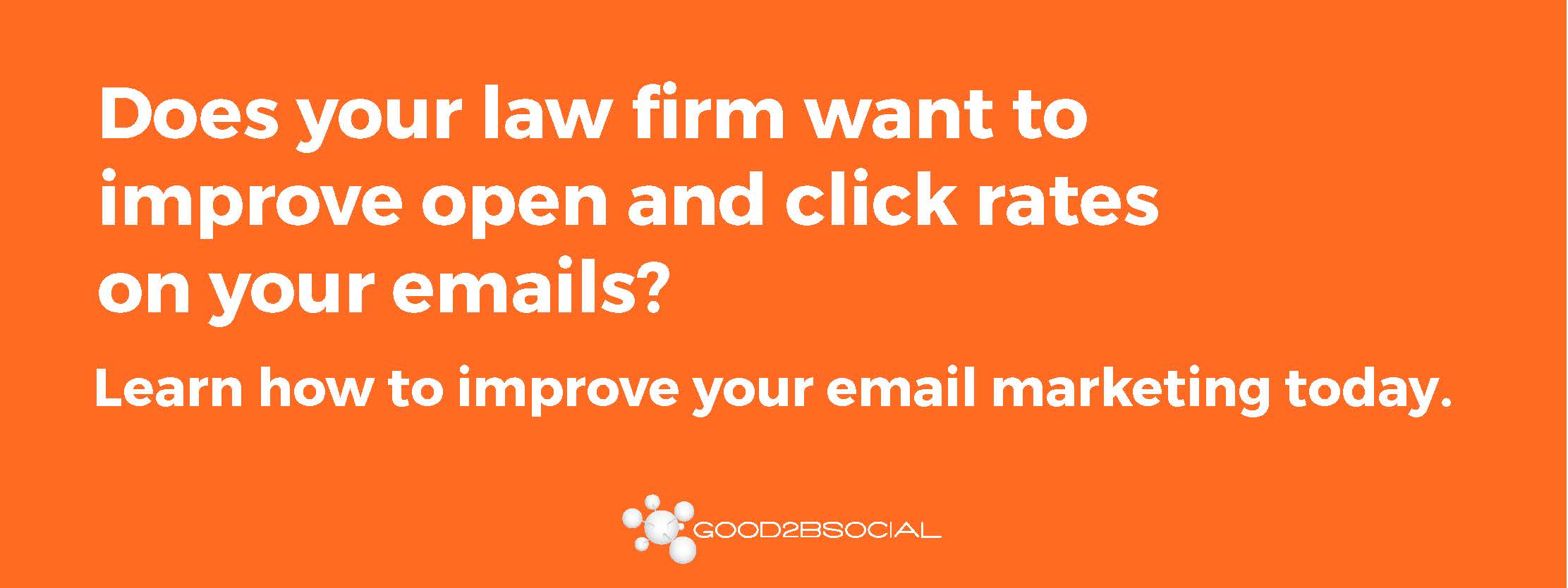
20 Email Marketing Segmentation Strategies Your Law Firm Can Try Today
Most law firms understand the importance of email to their overall digital marketing strategy. Despite other emerging marketing tactics such as social media, email is still an incredibly effective way to remain top-of-mind and nurture relationships with clients and prospects. While most law firms realize that email is here to stay, unfortunately, that doesn’t exactly mean certain email marketing best practices have caught on. Segmentation is one such best practice that can improve your email marketing campaigns exponentially. If your firm is seeking better revenue generation from email marketing programs, try out some of these segmentation strategies for law firms.
Email Marketing Segmentation Strategies for Law Firms
1. Geography:
This is pretty intuitive since most law firms practice within certain regions. Filter by zip code to ensure you’re marketing to people who are actually able to do business with you.
2. Client Persona:
If you haven’t created these before, email marketing is a great reason to do so. This will help you tailor campaigns to certain prospects, knowing what makes them tick and how your services will help them.
3. Business Types:
Does your law firm work primarily with individuals, businesses, or both? If businesses, what type? Segment your audience by business type so that you can promote your case studies or services only to the right audience.
4. Industry:
Even if you target multiple sectors, segmenting by industry can help you further personalize emails.
5. Job Function:
If you work primarily with businesses, there are probably certain roles that you interact with more than others, and the type of engagement might change based on who you’re dealing with. A CEO is likely interested in different blog topics than a CFO, for example.
6. Education Level:
This could be based on degrees or level of education. You might see trends in the services people need based on education levels, and you can create emails accordingly.
7. Seniority Level:
Similar to job function, seniority within an organization likely makes a difference in what individuals are looking for. A VP of a company is going to have different legal needs than the Chairman of the Board, for example.
8. Previous Services:
If someone has worked with you before, use that information to continue a relationship or sell them other services. Identify opportunities for additional engagements and reach out to your list.
9. Service Interests:
You can figure out what people are most interested in and then market to them based on that information. Consider reviewing past engagements or send a survey to your database.
10. Engagement Frequency:
Do you have certain clients that work with you regularly? You can put those people into their own campaign that is different from an introductory series for first-time clients, for example.
11. Content Topic:
As you publish content, you’ll eventually notice that certain subjects resonate more than others – and that might depend on the individual. Track what people are clicking, and set up campaigns to send emails to them adding more value to the subject matter (you can set up an automatic nurturing campaign around this if you have the right tools).
12. Content Format:
Just like content topics, some people are going to be more drawn to certain types of content – for example, a checklist vs. a white paper. Create programs that share more of the content mediums that people have shown interest in.
13. Interest Level:
Everyone that comes in contact with your firm is at a different place in their client journey. For example, someone who registered for a webinar but didn’t attend is displaying a different interest level than someone who stayed on the webinar for the entire program and then downloaded the recording.
14. A Change in Engagement Level:
If you are tracking activity, you’ll see trends where people display more or less interest in your content. Pay attention to this and address it. For example, if you notice someone is clicking less on your emails, send one asking if they’d like to see different information.
15. Email Provider:
Different email providers can indicate certain things about your clients. For example, you can develop more sophisticated, responsive designs for Gmail clients, including embedded videos.
16. Clients Who Refer:
Word-of-mouth is critical for law firms, and people who send new business your way are your biggest advocates. Send them emails discussing referral programs, encouraging reviews, etc.
17. Form Abandonment:
If someone made it to a form and started filling it out, you can assume there was at least some level of interest. Send emails encouraging individuals to take the next logical step and finish up what they started.
18. Webinar Attendees:
Remember that one of the main reasons for lawyers to host webinars is to generate referral sources, leads, and potential new clients. To do that, you need to continue the conversation. Set up a drip email campaign to attendees and even send out a survey asking them about their interest in future topics.
19. Page Views:
Web page views can be a strong indicator of areas of interest. Experiment with lead nurturing campaigns based on which parts of your firm’s website people have visited.
To learn more about analytics, watch this webinar: What Is Marketing Automation and How Can It Benefit Your Firm?
20. Clicks on Calls-to-Action:
Understanding what type of CTAs drive action can help you create better email language. Are recipients more likely to respond to “act now!” offers or content downloads? Addressing these clicking habits will help you segment your lists and then better tailor future offers.
Takeaway:
Email marketing is still an incredibly effective way for law firms to reach new clients and nurture relationships with current ones. The more effort you put into your law firm’s email strategies, the better your results will be. Segmentation strategies for law firms can’t be a one-size-fits-all approach, though. Use these tactics to slice and dice your database for more impactful, targeted campaigns.
If you need help with your law firm’s email marketing strategy, contact us today. We can streamline and automate your processes and help you increase the size and loyalty of your email subscribers.
This post has been edited and republished from July 16, 2020.
Are you ready to get started generating new, qualified leads?
Contact us to get started and let us help you energize your digital marketing and business development efforts.
Contact Us


